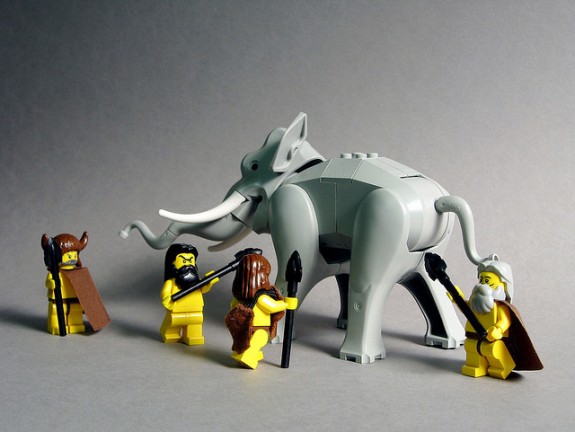People Have Been Using Stone-Tipped Spears For Way Longer Than We Thought
A new study adds 200,000 years to their run

Photo: Andrew Becraft
A group of early-human hunters, covered in furs with spears in hand, set to take down a wooly mammoth or fight off a saber tooth tiger, is a favorite trope when imagining the Stone Age. Of all the stone constructions employed by humans throughout this period, the stone-tipped spear is one of the most iconic, but also one of the most recent. New evidence, however, says The New York Times, is pushing back the age of the classic spear by 200,000 years, giving its term a 500,000 year run.
Modern humans and our varied Homo ancestors have been using stone tools for a really, really, really long time—probably for at least the past 2.6 million years, but maybe so long as 3.39 million years, says Erin Wayman for Smithsonian‘s Hominid Hunting.
The oldest-known type of stone tools are stone flakes and the rock cores from which these flakes were removed. Presumably used for chopping and scraping, these tools are called Oldowan, named for Tanzania’s Olduvai Gorge, where they were first recognized.
The adjusted date on the first use of stone-tipped spears pushes their construction far beyond the dawn of modern humans, and into the hands of one of our big-headed relatives, Homo heidelbergensis, the last common ancestor of both modern humans and Neanderthals, says the Times.
The idea of attaching a stone tip to a spear, known as hafting, was a critical advance in hunting. By using a spear with a piercing stone tip, early humans could cause their prey to bleed and die faster. It is a technique that was later used by both Neanderthals and early modern humans. “But we didn’t really know the antiquity of that practice until now,” Dr. Wilkins said.
More from Smithsonian.com:
/https://tf-cmsv2-smithsonianmag-media.s3.amazonaws.com/accounts/headshot/smartnews-colin-schultz-240.jpg)
/https://tf-cmsv2-smithsonianmag-media.s3.amazonaws.com/accounts/headshot/smartnews-colin-schultz-240.jpg)